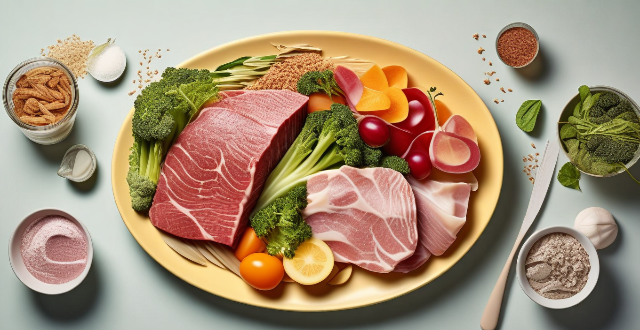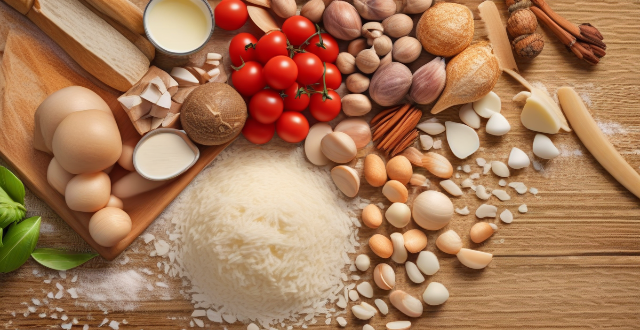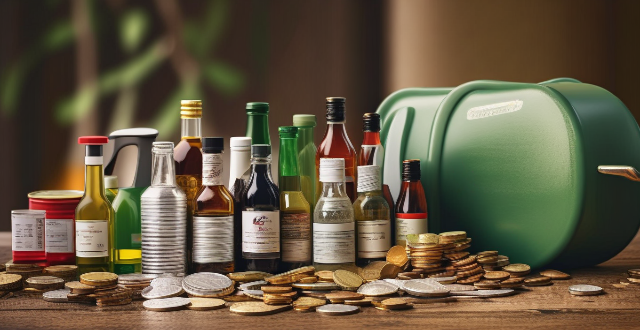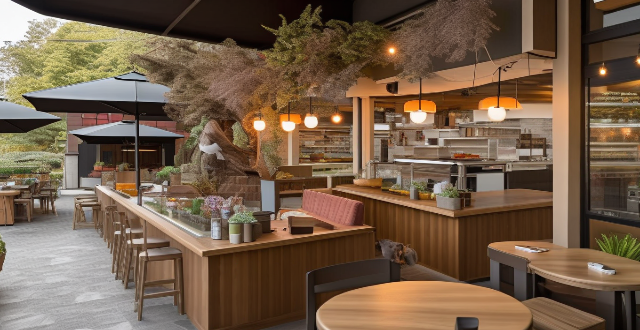Japanese Offer

What are some healthy options for Japanese breakfast ?
Japanese breakfast offers a variety of healthy options that provide essential nutrients and flavors. Miso soup is rich in protein and probiotics, aiding digestion and immunity. Tamagoyaki offers high-quality protein in a low-calorie package. Natto is fermented soybeans with vitamins, minerals, and probiotics for gut health. Onigiri are portable rice balls filled with various ingredients for carbohydrates and protein. Grilled fish provides omega-3 fatty acids for heart and brain health. Japanese pickles are low-calorie, fiber-rich vegetables aiding digestion. Yudofu is boiled tofu high in protein and calcium, suitable for vegans or those watching their weight. Okara, the soy milk residue, is high in fiber and protein, promoting fullness and digestive health. Incorporating these dishes into your breakfast routine can offer a balanced and nutritious start to the day while enjoying Japanese flavors.

Can you explain the concept of umami in Japanese cooking ?
Umami is one of the five basic tastes, along with sweet, sour, salty, and bitter. It is often described as a savory or meaty taste, and is commonly found in foods such as mushrooms, soy sauce, and aged cheeses. In Japanese cooking, umami is considered an essential flavor profile that adds depth and complexity to dishes. The science of umami is caused by the presence of glutamate, a type of amino acid, in food. When we eat foods that contain glutamate, it stimulates our taste buds and sends signals to our brain that register as a distinct taste. This taste is often associated with protein-rich foods like meat, fish, and vegetables. In Japanese cuisine, umami is used to enhance the flavors of dishes and create a more complex taste profile. Some common ingredients that are high in umami include miso (fermented soybean paste), dashi (Japanese broth made from dried fish and seaweed), soy sauce, dried shiitake mushrooms, and kombu (a type of seaweed). Umami is used in a variety of ways in Japanese cooking. For example, miso soup is made by mixing miso paste with dashi broth to create a savory soup that is often served as part of a traditional Japanese breakfast. Sushi combines vinegared rice, fresh fish, and soy sauce to create a perfect balance of flavors that includes umami. Ramen noodles use a broth made with chicken or pork bones, which are rich in umami. Teppanyaki involves grilling meat and vegetables on a hot plate, which helps to release their natural umami flavors. In conclusion, umami is an important flavor profile in Japanese cooking that adds depth and complexity to dishes. By using ingredients that are high in glutamate, chefs can create dishes that are both delicious and satisfying.

What kind of ingredients are commonly used in Japanese cuisine ?
Japanese cuisine is known for its unique flavors, fresh ingredients, and beautiful presentation. The most commonly used ingredients in Japanese cooking include white rice, brown rice, sweet rice, tuna, salmon, squid, shellfish, chicken, beef, pork, cabbage, eggplant, green onions, mushrooms, soy sauce, miso, udon noodles, soba noodles, ramen noodles, rice vinegar, sesame oil, nori, wasabi, and pickled ginger. These ingredients combine to create the diverse and delicious flavors that make Japanese cuisine so beloved around the world.

What are some popular Japanese dishes ?
Japanese cuisine is known for its exquisite flavors, meticulous preparation, and beautiful presentation. Some popular dishes include sushi, ramen, tempura, udon, and okonomiyaki. Sushi comes in various forms such as nigiri, sashimi, and maki. Ramen is a noodle soup with different broths and toppings. Tempura is a fried dish with a light batter. Udon is thick noodles served hot or cold with various toppings. Okonomiyaki is a savory pancake with diverse ingredients. Each region in Japan has its own specialties and unique flavors to explore.

What is the difference between ramen and udon noodles ?
Ramen and udon are two popular Japanese noodle dishes with unique flavors, textures, and cultural significance. Ramen is made from wheat flour, water, salt, and kansui, resulting in elastic and chewy noodles. It is typically served in a meat-based broth flavored with soy sauce, miso, or seafood, and topped with pork, menma, scallions, nori, and a soft-boiled egg. Udon, on the other hand, is made primarily from wheat flour and water, producing thicker and smoother noodles. Its broth is usually clear and light, made from kombu and shiitake mushrooms, and often served hot or cold with simple toppings like tempura, green onions, or grated ginger. Ramen originated in China but became popular in Japan during the early 20th century, evolving into a staple of Japanese cuisine. It has numerous regional variations across Japan, such as Sapporo's miso ramen, Hakata's tonkotsu ramen, and Tokyo's soy sauce-based ramen. Ramen shops can be found everywhere in Japan, from high-end establishments to quick street food stalls, reflecting its deep integration into daily life. Udon has been part of Japanese cuisine for centuries and is traditionally associated with Sanuki (now Kagawa Prefecture), known as the "Udon Kingdom." While udon is typically served in a simple broth or chilled with a dipping sauce, there are also hot pot variations like nabe and kitsune (fox) udon. Udon is often considered comfort food in Japan and is frequently consumed during cold weather or as a quick meal due to its ease of preparation. In conclusion, ramen and udon offer distinct experiences for those who enjoy them. Ramen provides a hearty and filling meal with complex broths and diverse toppings, while udon offers a cleaner taste with simpler broths and toppings, focusing on the pure enjoyment of the noodle itself. Both have their place in Japanese cuisine and continue to captivate noodle enthusiasts around the world.

How do I make a Japanese-style bento box ?
Bento boxes are a traditional Japanese meal that is packed in a box and typically consists of rice, fish or meat, and vegetables. Here's how you can make your own Japanese-style bento box: Ingredients: - 1 cup of cooked white rice - 1/2 pound of thinly sliced beef or chicken - 1 tablespoon of soy sauce - 1 tablespoon of sugar - 1 tablespoon of mirin (Japanese sweet cooking wine) - 1 teaspoon of sesame oil - 1/4 cup of sliced carrots - 1/4 cup of sliced bell peppers - 1/4 cup of sliced cucumbers - 1/4 cup of sliced cherry tomatoes - 1 sheet of nori (dried seaweed) - Salt and pepper to taste Instructions: 1. Marinate the Meat: In a bowl, mix together the soy sauce, sugar, mirin, and sesame oil. Add the sliced beef or chicken and let it marinate for at least 30 minutes. 2. Cook the Rice: Cook the rice according to package instructions until it is soft and fluffy. Set aside to cool slightly. 3. Prepare the Vegetables: Slice the carrots, bell peppers, cucumbers, and cherry tomatoes into thin strips. Season them with salt and pepper. 4. Cook the Meat: Heat a pan over medium heat and cook the marinated meat until it is browned and cooked through. Set aside to cool. 5. Assemble the Bento Box: Take a bento box and fill one compartment with the cooked rice. Arrange the cooked meat and vegetables in separate compartments or on top of the rice. Cut the nori into small pieces and sprinkle them over the rice and vegetables. 6. Enjoy Your Bento Box: Your Japanese-style bento box is now ready to be enjoyed! Eat it as a delicious and healthy meal or pack it for a picnic or lunch on-the-go.

Can you recommend a good Japanese restaurant in my area ?
The text provides recommendations for finding a good Japanese restaurant in one's area. It suggests checking online reviews, asking locals for recommendations, looking for specialties, and considering the ambiance. The steps to follow include searching online, making a list of potential restaurants, narrowing down options, calling ahead, and trying them out. The author encourages readers to enjoy their culinary adventure and discover personal favorites.

How do I use chopsticks properly when eating Japanese food ?
Using chopsticks is an art form in Japan, and there are certain etiquette rules that you should follow to show respect for the culture. Here's a step-by-step guide on how to use chopsticks properly when eating Japanese food: 1. Holding the Chopsticks: Hold the first chopstick (the one closer to the tip of the food) like a pencil, resting it between your thumb and index finger. This is your stationary chopstick. Place the second chopstick (the one closer to the end of the food) underneath the first chopstick, resting on your ring finger. This is your moving chopstick. 2. Picking Up Food: Use the tips of the chopsticks to scoop up food rather than pincing it with the ends. This is considered more polite and traditional. For larger pieces of food, it's acceptable to use both chopsticks to pick them up. For smaller items, try using just one chopstick if possible. 3. Eating: If you need to dip your food in soy sauce or another sauce, do so lightly and minimally. Overdoing it can be seen as wasteful. Place the food in your mouth from the chopsticks without making any noise. Chew with your mouth closed. 4. Chopstick Etiquette: Avoid playing with your chopsticks, tapping them on the table, or leaving them standing in your food. These actions are considered impolite. Never use your chopsticks to point at people or gesture with them. This is rude and associated with funeral rites in Japan. Do not lay your chopsticks across your plate or bowl as this resembles incense sticks at a funeral. Instead, rest them on the chopstick rest provided or on the edge of your dish. 5. After Eating: It's common to wipe the ends of the chopsticks before and after use with the small towel or oshibori provided. If you're at a restaurant, leave the chopsticks as they are when you finish eating. Do not put them back in their original packaging or wrap them up. By following these guidelines, you'll not only avoid offending anyone but also show that you respect and appreciate Japanese dining culture. Remember, practice makes perfect!

Do all brands offer sample sales ?
Not all brands offer sample sales, but many high-end and luxury brands do. Factors such as inventory management, product lifecycle, brand reputation, and marketing strategies influence whether a brand offers sample sales. Examples of brands that offer sample sales include Saks Off 5th, Nordstrom Rack, Neiman Marcus Last Call, and Bergdorf Goodman. Tips for shopping sample sales include staying informed, being prepared, setting a budget, trying everything on, and checking the quality.

Do any restaurants offer student discounts ?
Students often look for ways to save money, and one such way is by utilizing student discounts offered by various establishments, including restaurants. In this response, we will explore if there are any restaurants that offer student discounts and what benefits they provide. Yes, there are several restaurants that offer student discounts, which can vary from place to place and may not be advertised openly. Therefore, it is important to ask the staff or check their website before visiting. The benefits of student discounts at restaurants include saving money, trying new places, socializing, and convenience. To find out if a restaurant offers student discounts, you can check their website, ask the staff, or search online. Examples of restaurants that offer student discounts include McDonald's, Subway, Pizza Hut, Dairy Queen, and Burger King. In conclusion, there are several restaurants that offer student discounts, which can help students save money while enjoying a meal out with friends or family. By checking the restaurant's website, asking the staff, or searching online, you can find out if a restaurant offers student discounts and take advantage of them.

Is there a minimum purchase amount to qualify for the limited-time offer ?
Minimum purchase amount required for limited-time offer; benefits and tips for customers.

Do Outlet Stores offer better discounts than regular stores ?
Outlet stores offer discounts on merchandise, but do they really offer better deals than regular stores? The answer depends on several factors, including the type of product being purchased and the specific outlet store being visited. However, in general, outlet stores tend to offer better discounts due to their business model of selling overstock, discontinued, or returned items. Shopping at outlet stores can have benefits such as discounted prices, a wide selection of products, and convenience. By understanding the factors that contribute to these discounts and shopping strategically, consumers can make informed decisions about where to purchase their desired products.

Are there any cashback websites that offer 100% cashback ?
Cashback websites are a popular way to save money on online purchases by offering a percentage of the purchase price back to the customer, but not all offer 100% cashback. Some top cashback websites with high rewards include Rakuten, BeFrugal, Honey, Ibotta, and Swagbucks. While there may not be any cashback websites that offer 100% cashback, these options can still help you save money on your online purchases.

Which brands offer the biggest discounts at Outlet Stores ?
Outlet stores are known for offering discounted prices on a wide range of products from various brands. However, some brands tend to offer bigger discounts than others. Here are some of the brands that are known for offering significant discounts at outlet stores: 1. Nike: Offers discounts up to 50% off on shoes, apparel, and accessories, with clearance sales sometimes offering deeper discounts up to 70% off. 2. Coach: Offers discounts of up to 65% off on handbags, wallets, and accessories, with seasonal sales events like Black Friday and Cyber Monday providing additional savings. 3. Levi's: Offers discounts of up to 50% off on jeans, shirts, and other clothing items, with denim deals often available where you buy one item and get another for a significantly reduced price. 4. Calvin Klein: Offers discounts of up to 70% off on underwear, apparel, and accessories, with bundle deals often available where you buy multiple items for a discounted price. 5. Adidas: Offers discounts of up to 50% off on shoes, apparel, and accessories, with sports gear discounts also available on items like backpacks and duffel bags. End-of-season sales can provide even deeper discounts.

Are there any cashback websites that offer exclusive discounts and deals ?
Cashback websites offer exclusive discounts and deals to help you save money while shopping online. Some top cashback websites include Rakuten, Honey, BeFrugal, TopCashback, and Swagbucks. These websites offer competitive cashback rates and signup bonuses to attract new users. By using these websites, you can easily find the best deals and save money on your purchases.

What types of sports offer the most job opportunities for coaches ?
Sports coaching is a popular career option for many individuals. It offers the opportunity to work with athletes, help them improve their skills, and achieve their goals. However, not all sports offer the same level of job opportunities for coaches. In this article, we will explore the types of sports that offer the most job opportunities for coaches.

What kind of discounts should I offer during a clearance sale ?
Offering the right discounts during a clearance sale is crucial for attracting customers and clearing out inventory. Here are some strategies to consider: 1. Percentage-Based Discounts: Start with moderate discounts of around 20-30% on selected items and increase gradually as the sale progresses. 2. Buy One, Get One Free (BOGO) Offers: Select slow-moving items or bundle complementary items together. 3. Tiered Discounts: Encourage customers to spend more by offering tiered discounts based on the amount spent or quantity purchased. 4. Time-Limited Deals: Run short-term promotions like flash sales or countdown deals to create a sense of urgency. 5. Membership or Loyalty Discounts: Offer exclusive deals for members of your loyalty program or reward repeat customers with extra savings. 6. Price Threshold Discounts: Apply discounts only when a certain amount is spent or offer a maximum price guarantee. 7. Gift with Purchase (GWP): Reward loyal customers with free gifts or include promotional items with purchases over a certain amount. 8. Clearance Rack or Section: Designate a specific area or rack for clearance items and use prominent signage and labels to highlight the savings. 9. Online-Exclusive Deals: Offer exclusive online deals to encourage online shopping and reduce the burden on physical store inventory. 10. Combination Discounts: Mix and match different types of discounts, such as a percentage-based discount combined with a GWP offer or allow customers to combine multiple discounts for maximum savings. Remember, the goal of a clearance sale is to move inventory while still maintaining profit margins and brand reputation. Be strategic in your discounting approach and communicate clearly with customers about the deals you're offering.

Can I combine the limited-time offer with other store promotions ?
## Can You Combine a Limited-Time Offer with Other Store Promotions? The answer to this question depends on the store and its policies. Some stores allow customers to combine limited-time offers with other promotions, while others do not. It is important to read the terms and conditions of each promotion carefully to determine whether they can be combined. Key points to consider include reading the fine print, contacting customer service for clarification, checking if stacking discounts are allowed, being aware of the timing of promotions, and knowing any exclusions that may apply.

Can you suggest luxury resorts that offer exceptional dining experiences ?
Luxury resorts offer exceptional dining experiences, from oceanfront restaurants to farm-to-table options. Here are some top picks for luxury resorts with exceptional dining: Four Seasons Resort Bali at Jimbaran Bay, Amangiri in Utah, Banyan Tree Mayakoba and Rosewood Mayakoba in Mexico, Six Senses Zighy Bay in Oman, Emirates One&Only Wolgan Valley in Australia, Mandarin Oriental Bodrum in Turkey, Cheval Blanc Randheli in the Maldives, The Brando in French Polynesia, and Capella Ubud in Bali.

What are some shopping apps that offer exclusive promotions and sales events ?
The text discusses various shopping apps that offer exclusive promotions and sales events. Amazon, Walmart, Target, Best Buy, eBay, and Groupon are among the top shopping apps that provide deals to consumers. These apps offer daily deals, loyalty programs, holiday promotions, and more to help shoppers save money on their purchases. The article concludes by urging readers to check out these apps before making any purchases.

Can I use other discounts along with a buy one get one free offer ?
The article discusses whether customers can combine other discounts with a buy one get one free (BOGO) offer. BOGO offers are common in various industries and provide customers with an additional item for free when they purchase one at full price. However, most retailers do not allow combining discounts with BOGO deals. There are exceptions to this rule, such as during holiday seasons or if certain products are excluded from the general rule. The article provides tips on how to navigate these policies and maximize savings by being strategic in their purchases.

Are all products included in a buy one get one free offer or are there exclusions ?
The answer to this question depends on the specific offer and the terms and conditions set by the retailer or manufacturer. In general, most "buy one get one free" offers apply to a select range of products, and there may be certain exclusions. Here are some common scenarios: - Exclusions based on product category, such as certain types of products not being eligible for the offer. - Exclusions based on brand or price, with some brands or items above a certain price threshold being excluded from the promotion. - Exclusions based on quantity limits, with caps on the number of items you can get for free or individual item limits. - Other potential exclusions, such as promotional periods or redemption requirements. It's essential to read the fine print and understand any potential exclusions before making a purchase to ensure that you fully benefit from the promotion without encountering unexpected limitations or disappointments.

Are there any exclusive dining spots in Los Angeles that offer an exceptional culinary experience ?
Los Angeles boasts a variety of exclusive dining spots offering unique settings, innovative menus, and world-class service. From seafood at Providence to modernist cuisine at Vespertine, these restaurants cater to those seeking an exceptional culinary experience. Reservations are often necessary due to popularity and limited availability.

What are some must-try local experience activities in Tokyo ?
Tokyo offers a variety of local experience activities that cater to different interests, including sushi making classes, tea ceremonies, ninja training, kimono experiences, sake tasting, Sumida River cruises, traditional craft workshops, ramen museum and cooking class, robot restaurant show, Harajuku street fashion tour, baseball game at Tokyo Dome, Tsukiji Fish Market tour, Asakusa Temple and traditional shopping street, Kabuki theatre performance, and Odaiba Beach and DiverCity Tokyo Plaza. These activities provide an authentic Tokyo experience and allow visitors to fully appreciate the diverse facets of Tokyo's vibrant lifestyle.

What are the terms and conditions of using a cashback website ?
Cashback websites offer users the opportunity to earn money back on purchases made through their platform. However, there are certain terms and conditions that users must adhere to in order to take advantage of these offers. These include age restrictions, account verification, residential address requirements, expiration dates for offers, minimum purchase amounts, exclusions, limitations on use, payment methods for redeeming rewards, withdrawal fees, processing times, data protection measures, password security, fraud prevention, customer support, dispute resolution processes, and refund policies.

What are the best travel destinations for foodies ?
The text discusses the best travel destinations for food lovers, including Italy, France, Japan, Thailand, and India. The author provides a brief overview of each country's cuisine, highlighting some popular dishes that are unique to each destination.

Can you suggest any upscale restaurants with stunning views in Sydney, Australia ?
Sydney, the cosmopolitan capital of New South Wales, boasts numerous upscale restaurants that offer breathtaking views. Some suggestions include Quay, situated overlooking the iconic Sydney Harbour Bridge and Opera House, serving modern Australian cuisine in a formal and luxurious atmosphere; Aria, located in the stylish Barangaroo neighborhood, offering innovative Australian cuisine with sweeping views of the harbor bridge and city skyline; The Langham, situated on the top floor of the historic Langham Hotel, providing panoramic views of the city and Botanical Gardens while serving French-inspired fine dining; Tetsuya's, set in a converted warehouse in Woolloomooloo, offering Japanese-Australian fusion cuisine overlooking the beautiful Finger Wharf; and Sepia, located on Level 3 of the Sydney Tower, providing spectacular views of the city and harbour while serving modern Australian cuisine with a focus on wood-fired cooking. These establishments not only offer exquisite cuisine but also provide stunning views of Sydney's iconic landmarks and picturesque skyline, making them perfect for celebrating special occasions or enjoying a memorable dining experience.